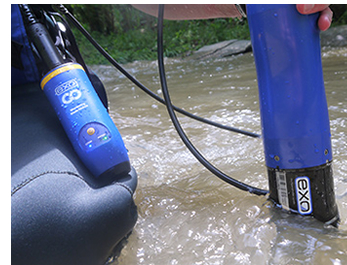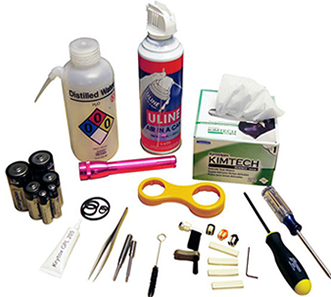Is your Sonde Field Ready?
As the leading manufacturer in water testing equipment, the experts at YSI have gathered 7 great tips to make sure your multiparameter water quality sondes are ready for the sampling season, collecting correct and reliable data for you.
#1: Inspect the Condition of Your Sensors
It’s important to inspect the condition of your sensors before you start your maintenance and calibration procedures. Ensuring a good storage procedure will prove to be helpful in keeping all your sensors and probes in good condition and ready for use.#2: Maintain Your Instrument Sensor Connections
 Connections are as important as sensors. Not looking after the connections properly can prevent the optimal performance of your probes. Water, dirt, corrosion, or any other foreign material found in the connections may cause interrupted signals and therefore affect the quality of the data collected.
Connections are as important as sensors. Not looking after the connections properly can prevent the optimal performance of your probes. Water, dirt, corrosion, or any other foreign material found in the connections may cause interrupted signals and therefore affect the quality of the data collected.#3: Check Your Batteries & Power Supply
Always check the battery compartment when you’re preparing your sonde, as there are a few problems that can come from battery related issues, like leaks. Batteries can leak fluid that is harmful to the internal compartments of a sonde. Another issue is the use of lithium or nickel-cadmium batteries, which have a much higher voltage than alkaline ones. These can damage or fry some of the electronics in the sondes.#4: Keep Firmware & Software Updated
Your water quality sonde and its data is only as up to date as the software, so it is critical that you always make sure your equipment is up to date with firmware/software upgrades.#5: Calibrate All Your Sensors Prior to Collecting Data
Every sensor has its own calibration procedure. However, as all water quality sensors rely on a working temperature sensor to provide reliable data, always check this sensor first: if your temperature sensor is bad, there’s no reason to proceed with calibrations.#6: Finalize Your Sonde Settings Prior to Leaving for the Field
 How do you want your equipment to record data? Depending on how you answer this question, you’ll need to set up the correct configuration on your sondes.
How do you want your equipment to record data? Depending on how you answer this question, you’ll need to set up the correct configuration on your sondes.#7: When Going Into the Field, Always Bring a Survival Kit
Keeping in mind where you are going and what resources you’ll have available there, create a kit that allows you to have the right tools at hand when you are out in the field.A good place to start is the maintenance kit provided with most instruments. Other tools you might consider are: an extra cable, spare batteries, a Phillips and flat head screwdriver, a small flashlight, a can of compressed air, extra wiper pads or brushes, paper towels, DI water and a few calibration standards. Check out the acessories we have available for the Exo range.
Read the Article from YSI in full here.
Contact our Environmental Sales Specialist to make sure your sondes are ready for the field.
